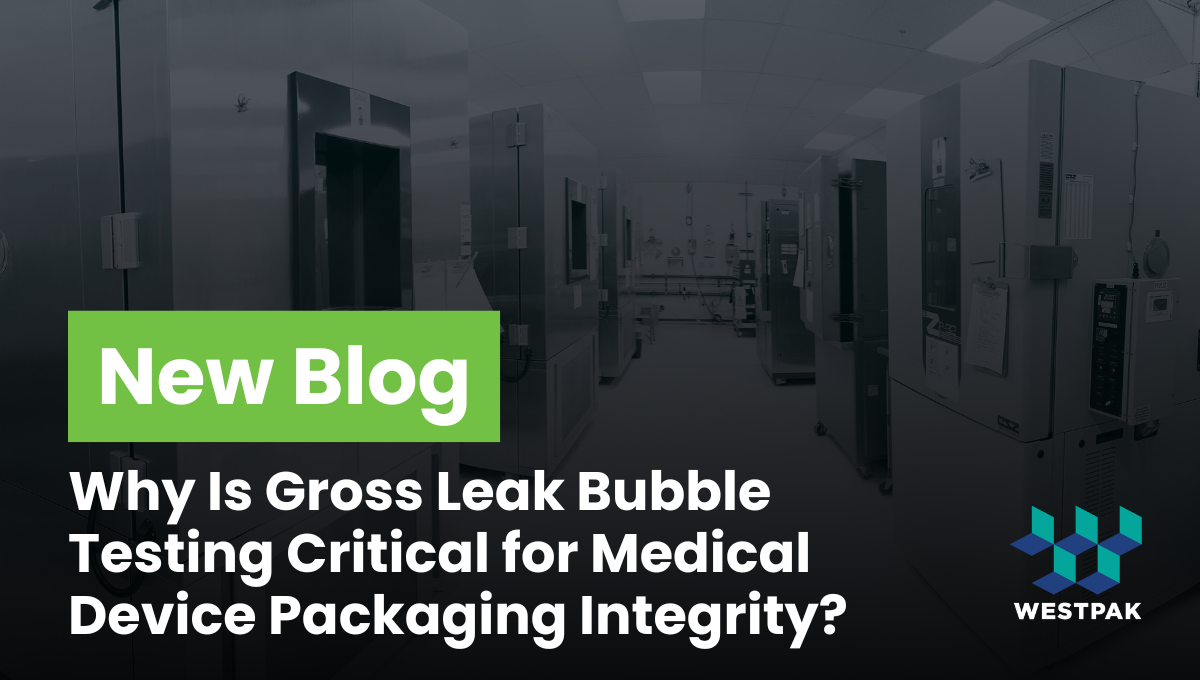In the high-stakes world of medical device manufacturing, packaging isn’t just a container, it’s a sterile barrier system (SBS) that protects patient safety, regulatory compliance, and brand reputation. What is one of the most effective ways to ensure that medical device packaging performs its critical role? Gross Leak Bubble Testing.
The Sterile Barrier Challenge
Medical devices that are terminally sterilized must remain sterile from the moment they are sterilized until they reach the point of use. According to ISO 11607-2:2019, packaging must be designed and validated to maintain sterility under documented storage and transport conditions. Any breach in the SBS can lead to contamination, costly recalls, and loss of trust.
That’s where package system performance testing comes in, simulating real-world distribution environments to evaluate how packaging holds up. Among the most essential of these tests is Gross Leak Testing, also known as the Bubble Test.
What Is Gross Leak Bubble Testing?
Bubble Testing is a qualitative method that detects packaging defects by submerging a lightly pressurized SBS under water and watching for a steady stream of bubbles. This is clear evidence of a leak. It’s governed by ASTM F2096, which can detect leaks as small as 250 μm (0.010 in.) in tray and pouch packages using a gross leak bubble tester.
The Sterile Barrier Challenge & How Bubble Testing Helps
Medical devices that are terminally sterilized must remain sterile from the moment they are sterilized until they reach the point of use. According to ISO 11607-2:2019, medical device packaging must be designed and validated to maintain sterility under documented storage and transport conditions. Any breach in the SBS can lead to contamination, costly recalls, and loss of trust.
That’s where package system performance testing comes in, simulating real-world distribution environments to evaluate how packaging holds up. Among the most essential of these tests is Gross Leak Testing, also known as Bubble Testing.
Unlike other methods that only test seals, Bubble Testing evaluates the entire sterile barrier system, making it a powerful tool in your validation arsenal.
Why Medical Device Packages Fail & and How to Prevent It
What are common causes of SBS failure during Bubble Testing?
- Folding or creasing of pouches
- Sharp product edges
- Square corners on backer cards
- Improperly validated seals
- Inappropriate film thickness
- Thin tray corners
- Unsuitable package design
How should manufacturers address Bubble Testing failures?
- Review packaging materials for robustness
- Conduct visual inspections for physical defects
- Reassess sealing parameters that were established during the IQ, OQ, PQ process of your sealing equipment.
Bubble Testing vs. Dye Penetration Testing
While dye penetration testing is another method for detecting leaks, Bubble Testing offers distinct advantages. It’s more sensitive, tests the entire SBS, and is widely accepted as a standard method for ensuring package integrity.
Why WESTPAK Lab Testing?
WESTPAK is an ISO 17025 accredited and ISTA-certified independent test lab with over 100,000 square feet of testing space across California labs. Their team of experts, including ASTM committee members, offers unmatched technical insight and customized testing solutions.
Whether you’re launching a new device or validating a packaging redesign, WESTPAK’s Bubble Testing services can help you ensure compliance, protect patients, and accelerate time to market.
Ready to dive deeper into the science and strategy behind Bubble Testing?
Download the full Bubble Testing white paper or contact WESTPAK at 800-830-8021 to get started.
